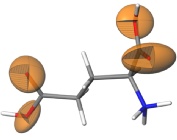 Electronic structure theory has provided research scientists both in academia and industry with an unprecedented ability to make first principles predictions of a wide range of physical and chemical properties of a diverse range of systems limited solely by the available computational power. Genuine academic research, therefore, now lies beyond the standard application of density functional methods. Our research is to develop new methods with greater accuracy (Quantum Monte Carlo) or wider applicability (such as linear scaling for Density-Functional Theory), and on novel applications of these methods in physics, biology, chemistry and materials science.
Electronic structure theory has provided research scientists both in academia and industry with an unprecedented ability to make first principles predictions of a wide range of physical and chemical properties of a diverse range of systems limited solely by the available computational power. Genuine academic research, therefore, now lies beyond the standard application of density functional methods. Our research is to develop new methods with greater accuracy (Quantum Monte Carlo) or wider applicability (such as linear scaling for Density-Functional Theory), and on novel applications of these methods in physics, biology, chemistry and materials science.
It may seem surprising at first, but random numbers can be used to help solve complicated problems in physics. A simple example of one such Monte Carlo technique is illustrated in the figure on the right. A series of random numbers is generated, which are used in pairs as the coordinates of a set of points. By counting the fraction of points which lie inside the circle, which is just the ratio of the areas of the circle and square, the value of π can be estimated.
The accurate modelling of atomistic processes requires the solution of the equations of quantum mechanics. However, for systems of many interacting particles, these equations are far too difficult to solve exactly, even using the most powerful supercomputers. Methods based on density-functional theory (DFT) employ well-controlled approximations which make the calculations tractable but without the need for a priori assumptions which would compromise the first-principles approach.
 Needs and co-workers are authors of the world leading quantum Monte Carlo code CASINO. Payne's CASTEP software continues to be sold by Accelrys with annual sales exceeding £1 million.
Needs and co-workers are authors of the world leading quantum Monte Carlo code CASINO. Payne's CASTEP software continues to be sold by Accelrys with annual sales exceeding £1 million.
